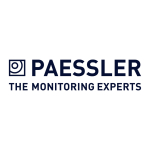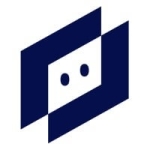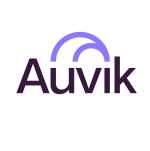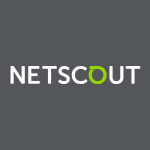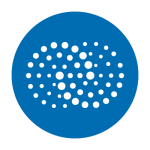What is our primary use case?
We're using Kentik for flow data, so we can do things like peering management and interconnection research, as well as capacity management. We also use it fairly heavily in our tech cost-reporting so we can see things such as how many dollars per gigabyte and how much we're using.
The deployment model is cloud, which Kentik provides.
How has it helped my organization?
Before using the solution, we had to do all these manual tasks, such as running all these queries manually, and building our tech cost-report used to be a two or two-and-a-half-week effort. Using Kentik, and the automation that it provides us, we've brought that down to a day or two, which is a massive time savings.
Our capacity managers would say the visibility and the dashboards have improved the way our organization functions. They can see, at a glance, which of our data centers is serving which countries, and that really helps them in their planning.
In terms of the solution's months of historical data for forensic work, we reformulated the way we calculate costs so we had to go back into the historical data and use that raw data to calculate the costs again. It wasn't necessarily forensic networking, but it was forensic cost and business work.
What is most valuable?
The queries, in general, are great, being able to add tagging to the flows.
Having the API access allows us to do a great deal of automation around a lot of our reporting and management tools. I'm the manager of automation at our company, so for me, that's the big winner.
We're using the dashboard, but that's not as high-priority a use case for us.
We're also using Kentik to ingest metrics. It's a useful feature, and its response time, whenever we're pulling back the data, is higher than our on-prem solution. That's one of the points in its favor.
What needs improvement?
There is room for improvement around the usability of the API. It's a hugely complex task to call it and you need a lot of backing to be able to do it. I should say, as someone who's not in networking, maybe it's easier for people who are in networking, but for me that one part is not very user-friendly.
Buyer's Guide
Kentik
April 2025
Learn what your peers think about Kentik. Get advice and tips from experienced pros sharing their opinions. Updated: April 2025.
848,716 professionals have used our research since 2012.
For how long have I used the solution?
Our company has been using Kentik for between two and three years. I only came on board about ten months ago.
What do I think about the stability of the solution?
It's very stable. We have not had any issues that I've heard of since it was brought online.
What do I think about the scalability of the solution?
So far we've been able to more than double and triple our use cases for it and it hasn't really even hiccupped. The scalability seems good.
We have data centers all around the world and Kentik is in every data center. We plan to build many more, and it's going to be included into each of those builds. We're using it globally and expect to keep growing its use.
How are customer service and support?
Technical support has been very excellent. We've had many novel use cases which we've had to send back to them and their response times, and the solutions that they've given us, have always been better than satisfactory. They've met our needs and then some.
Which solution did I use previously and why did I switch?
We're also using a competitor, Druid, which is an open-source version that we host on-prem. So we're actually doing both cloud and on-prem solutions. At the moment we use each solution to verify the other.
We decided to bring in Kentik partially because of cost. Our particular instantiation of Druid is enormously expensive. The director of capacity management wanted to spin up Kentik, originally as a PoC, to see what kind of data we could get out of it for a lower price point. But then he quit, and we're still just going along with it. Eventually a decision will be made between them, but initially it was cost that pushed us toward Kentik, to see if we could get more bang for our buck.
A related difference between the two solutions is that with Kentik, and the infrastructure owned by someone else since it's a SaaS solution, the overhead on our side is much lower. We're also not necessarily on the hook for dedicated infrastructure costs. So, the price is amazing.
With Druid, for every node that's recording all of this data that goes across the routers and such, there are no limits. With Kentik, occasionally, we'll drop data or we'll get a spike in the traffic that will make the data unreliable. That does not happen in Druid because it's not metered the same way.
What was our ROI?
So far, we have seen ROI by going with Kentik through the time savings I already spoke about, with the ability to automate. But there is also ROI just straight up on the cost. It's considerably cheaper, and from what we've found, the data is just as rich. It's a very meaty data point in some of our planning for the future.
What's my experience with pricing, setup cost, and licensing?
We have an annual contract with Kentik that we renew each year for a set number of licenses. We also have some burstable licenses which we can spin up and spin down, and those are paid as they are used. We have 20 of those licenses but we don't get charged for them unless we use them.
What other advice do I have?
Rely on the customer service reps. That would be my biggest piece of advice because they've got all the good tips and tricks.
The user base of Kentik in our company is very small, about 15 people or less. That includes our interconnection managers, peering managers, and capacity managers, as well as my small team of software developers.
For deployment and maintenance of the solution it requires one person or less. Nobody needs to make it their full-time job, which is nice. Those responsibilities are spread across several people. One of the interconnection managers helps me, for example.
Overall, I would rate Kentik at eight out of ten. The fact that we can lose data whenever we have traffic spikes, which our business does pretty regularly, is what would keep any solution from a ten, because I can't always, for every data point, say this is accurate. Occasionally there's an asterisk next to the data.
Disclosure: PeerSpot contacted the reviewer to collect the review and to validate authenticity. The reviewer was referred by the vendor, but the review is not subject to editing or approval by the vendor.





